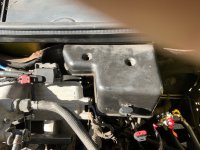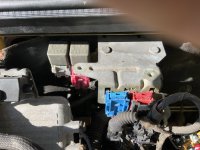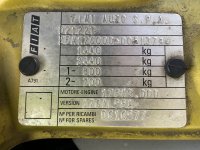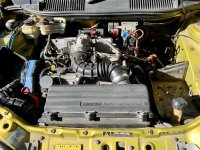AndrewCas
Member
Hello,
as above I have a punto 1 1996 1.6 elx 90 5 door hatch.
awhile ago car just stopped running on motorway.AA came said no spark. Got it home to investigate.
I replaced with new coil pack, new leads, new crankshaft sensor. Cranked engine, started first time, ran for about 15 seconds then stopped. Tried to restart, nothing.
tried to hear anything from fuel pump, but couldn’t hear any noise when turning on ignition.
long story short replaced fuel pump, but still no short noise from pump when turning key. Tried starting, nothing.
have included pics of my engine, engine relay,fuses and glove box relay and fuses.
im not sure which is fuel relay or fuel fuse. Have checked fuses all ok. Any help would be appreciated
as above I have a punto 1 1996 1.6 elx 90 5 door hatch.
awhile ago car just stopped running on motorway.AA came said no spark. Got it home to investigate.
I replaced with new coil pack, new leads, new crankshaft sensor. Cranked engine, started first time, ran for about 15 seconds then stopped. Tried to restart, nothing.
tried to hear anything from fuel pump, but couldn’t hear any noise when turning on ignition.
long story short replaced fuel pump, but still no short noise from pump when turning key. Tried starting, nothing.
have included pics of my engine, engine relay,fuses and glove box relay and fuses.
im not sure which is fuel relay or fuel fuse. Have checked fuses all ok. Any help would be appreciated
Attachments
-
 A36C79E4-4BDD-48BB-B0E4-601ECAF6D06B.jpeg1.9 MB · Views: 819
A36C79E4-4BDD-48BB-B0E4-601ECAF6D06B.jpeg1.9 MB · Views: 819 -
 9315DC5E-AFE6-40F9-874A-6D853289C5C8.jpeg1.8 MB · Views: 143
9315DC5E-AFE6-40F9-874A-6D853289C5C8.jpeg1.8 MB · Views: 143 -
 83090091-EC00-4E60-BAF4-F62EAB19A5F9.jpeg2 MB · Views: 111
83090091-EC00-4E60-BAF4-F62EAB19A5F9.jpeg2 MB · Views: 111 -
 6F25B151-728A-4ADD-BBAA-3F50D81CDB17.jpeg2.3 MB · Views: 121
6F25B151-728A-4ADD-BBAA-3F50D81CDB17.jpeg2.3 MB · Views: 121 -
 6220C822-B4D2-4F88-9E57-DBBF0F387F17.jpeg2 MB · Views: 120
6220C822-B4D2-4F88-9E57-DBBF0F387F17.jpeg2 MB · Views: 120



